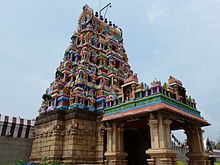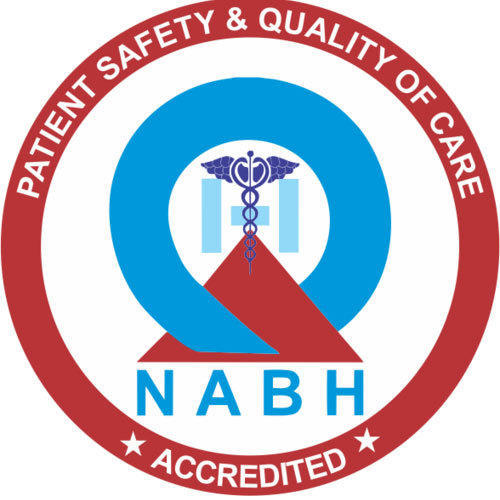-
Home
- Anniversary
- About
- Punarnava-Ayurveda
- Story of Vaidyagrama
- Our Family
- Gallery
-
Testimonials
>
- Testimonials 2009
- Testimonials 2010
- Testimonials 2011
- Testimonials 2012
- Testimonials 2012
- Testimonials 2013
- Testimonials 2014
- Testimonials 2015
- Testimonials 2016
- Testimonials 2017
- Testimonials 2018
- Testimonials 2019
- Testimonials 2020
- Testimonials 2021
- Testimonials 2022
- Testimonials 2023
- Testimonials 2024
- Disclaimer
- Privacy Policy
- Services
- Booking
- Affiliates
- Shop
- Contact
Flights, visa, insurance, weather...
FLIGHTS, VISA, INSURANCE
From Coimbatore Airport
It is best to fly into Coimbatore international airport which is connected by daily flights with Chennai, Bangalore, Mumbai and Delhi. You can also fly into Coimbatore directly from Sri Lanka, Singapore and Sharjah on specific days in a week. From Coimbatore airport, vaidyagrama is around 30kms away (a car drive of around 50 minutes). The approximate taxi fare (in 2021) is as follows - AC 3-seater car - INR1300 / USD20 AC 5-seater vehicle - INR2500 / USD40. Please note that the above rates are subject to change based on the prevailing rates. If you inform us your travel plans in advance, we can arrange to send you a car of your choice to pick you up from the airport.
Airport-Vaidyagrama Road.
Visa and eVisa
Please do remember to verify whether you need to get a visa for landing in India. Patients from most countries need to have a medical visa to come to vaidyagrama. For a smoother immigration process, it is better to take a medical visa when you come for Ayurveda treatment to India. The process of getting a visa can take anywhere between 1-12 weeks (or sometimes even more), depending on where you are located.
For those of you who get an e-visa, please do verify the airports in India where you can clear immigration with the e-visa. As on date, you can land in Coimbatore International Airport with an e-visa. Also do remember that generally you cannot get an extension of stay on your e-visa. In case of any doubt, please do speak with your travel agent to ensure that your journey to India is smooth and without hurdles.
Overseas Travel Medical Insurance
You might want to check with your travel agent about the possibility of acquiring overseas travel medical insurance. This would be useful in case of any emergency medical need during your stay in India.
It is best to fly into Coimbatore international airport which is connected by daily flights with Chennai, Bangalore, Mumbai and Delhi. You can also fly into Coimbatore directly from Sri Lanka, Singapore and Sharjah on specific days in a week. From Coimbatore airport, vaidyagrama is around 30kms away (a car drive of around 50 minutes). The approximate taxi fare (in 2021) is as follows - AC 3-seater car - INR1300 / USD20 AC 5-seater vehicle - INR2500 / USD40. Please note that the above rates are subject to change based on the prevailing rates. If you inform us your travel plans in advance, we can arrange to send you a car of your choice to pick you up from the airport.
Airport-Vaidyagrama Road.
Visa and eVisa
Please do remember to verify whether you need to get a visa for landing in India. Patients from most countries need to have a medical visa to come to vaidyagrama. For a smoother immigration process, it is better to take a medical visa when you come for Ayurveda treatment to India. The process of getting a visa can take anywhere between 1-12 weeks (or sometimes even more), depending on where you are located.
For those of you who get an e-visa, please do verify the airports in India where you can clear immigration with the e-visa. As on date, you can land in Coimbatore International Airport with an e-visa. Also do remember that generally you cannot get an extension of stay on your e-visa. In case of any doubt, please do speak with your travel agent to ensure that your journey to India is smooth and without hurdles.
Overseas Travel Medical Insurance
You might want to check with your travel agent about the possibility of acquiring overseas travel medical insurance. This would be useful in case of any emergency medical need during your stay in India.
THINGS TO BRING
Things to bring with you when you come for treatment to vaidyagrama -
An important point
An international patient should also bring -
Things NOT to bring with you
Some Guidelines
- all your relevant medical reports
- any medication (including allopathic) that you are currently using and cannot be immediately discontinued (please bring sufficient stock to last you through the period you are here)
- simple, comfortable and modest cotton clothing (based on the season that you are here); it might be best to bring some old clothing which can be discarded if necessary after the treatment (the smell of the oils is strong and hence you may choose not to carry the clothes back home)
- comfortable non-slippery footwear; and 2-3 pairs of socks for use in areas where footwear is not permitted
- your music system and some easy-on-the-ear music, mantras, instrumental music, motivational talks, spiritual discourses etc.
- 1 light sweater or shawl to keep you warm (do check the section on weather to know whether you need to bring more shawls)
- 2-3 scarves to cover your head and neck (to protect from exposure to sun, wind rain etc.) when you move out of the room
- essential reading material (please note that our physicians do not advise you to read during the treatment process)
- herbal mosquito repellant in case you are very sensitive to mosquitoes (all our doors and windows as also the beds have nets)
- 1 torch
- 1-2 sheets to cover the yoga mat in the satsang hall when you do yoganidra
An important point
- Since the treatments are primarily oil based, there is a possibility for mild oil stains or odour remaining on the bedsheets and pillow covers even after going through the laundry
- In the laundry, the sheets and pillow covers are first put in boiling water and then washed using a non-chemical detergent
- In case you are not comfortable using these common sheets and pillow covers, please feel free to carry with you three sets of sheets and pillow covers which will be used exclusively for you
An international patient should also bring -
- 3 copies of the passport page with the photo
- 3 copies of the passport page with the visa stamp
- bank notification / copy of the endorsement on the passport for travellers' cheques (if that is the preferred mode of payment)
Things NOT to bring with you
- anything to eat including snacks, chocolates, sweets etc.
- excessive reading material
- video DVDs
- make-up kit, hair dye, nail polish, other cosmetics etc.
- additives like cigarettes, alcohol etc.
Some Guidelines
- The traditional culture in and around vaidyagrama is for women to use clothing that covers their legs completely, and upper clothing with sleeves. To fit in easily into this culture, you may prefer to use similar clothing.
- Further the treatment also requires that you be completely covered through the entire day to prevent you from catching any fever, cold, cough etc. during the treatment.
- If you choose to use minimal clothing within your room, please do ensure that you keep the door locked; this will avoid embarrassment for there will be many people who come into your room for several different reasons like giving food, giving medicines, housekeeping etc.
- Generally the culture in vaidyagrama is that the staff knock on the room door once and then enter unless specifically instructed otherwise by the patient
WEATHER
|
Coimbatore has a pleasant salubrious climate through the year due to its proximity to thickly forested mountain ranges and the cool breeze blowing through the Palakkad gap which makes the hot temperatures more pleasant. Under the Koppen climate classification, the city has a tropical wet and dry climate, with the wet season being from October to November due to the northeast monsoon. Due to the presence of the mountain pass, Coimbatore also benefits from the south-west monsoons in the months from June to August. Coimbatore is located at an elevation of about 411 metres. The mean maximum and minimum temperatures vary between 35C (95F) and 18C (64F).
vaidyagrama is located exactly in the Palakkad pass and hence the climate at vaidyagrama is generally more pleasant (than Coimbatore city) all through the year. The period from early March to end April is hotter than the rest of the year. However inside the patient rooms, the temperature normally does not exceed 30C throughout the year. Hence it is generally conducive to do Ayurveda treatment at vaidyagrama almost throughout the year. |
Average temperature
(Source: Indian meteorological department) January 18C (64F) - 30C (86F) February 19C (66F) - 32C (90F) March 21C (70F) - 35C (95F) April 23C (73F) - 35C (95F) May 23C (73F) - 34C (93F) June 22C (72F) - 31C (88F) July 22C (72F) - 30C (86F) August 22C (72F) - 31C (88F) September 22C (72F) - 32C (90F) October 22C (72F) - 31C (88F) November 21C (70F) - 29C (84F) December 19C (66F) - 29C (84F) |
Places to visit in Coimbatore
|
The region was called Kongunadu ruled by and was ruled by semi-independent chieftains who owed nominal allegiance to the Chera kingdom and Kongu kings. Large quantities of Roman coins and other artifacts discovered in the region attest to the presence of Roman traders. The Coimbatore region is in the middle of the "Roman trail" that extended from Muziris to Arikamedu. At the end of the Sangam period, the region became a part of the Western Ganga kingdom. The Medieval Cholas conquered the region in the 9th century CE. They constructed a highway called "Rajakesari Peruvazhi" During the 9th century CE, Coimbatore was ruled by Irula chief Kovan or Covan during whose reign the city of Coimbatore was constructed, allegedly at the behest of a Chera king who accompanied Cuntarar on a pilgrimage to the Patteswarar Temple, Perur. Following the decline of the Cholas, Coimbatore was ruled for brief periods by the Pandyas. READ MORE HERE
|
The vaidyagrama drive
Concept |
stay |
|
|
-
Home
- Anniversary
- About
- Punarnava-Ayurveda
- Story of Vaidyagrama
- Our Family
- Gallery
-
Testimonials
>
- Testimonials 2009
- Testimonials 2010
- Testimonials 2011
- Testimonials 2012
- Testimonials 2012
- Testimonials 2013
- Testimonials 2014
- Testimonials 2015
- Testimonials 2016
- Testimonials 2017
- Testimonials 2018
- Testimonials 2019
- Testimonials 2020
- Testimonials 2021
- Testimonials 2022
- Testimonials 2023
- Testimonials 2024
- Disclaimer
- Privacy Policy
- Services
- Booking
- Affiliates
- Shop
- Contact






